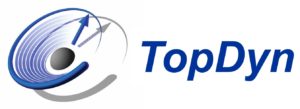

Seminar über die Physik der kondensierten Materie (SFB/TRR173 Spin+X und SFB/TR288 Kolloquium, TopDyn-Seminar)
April 25, 2017 at
12:15 p.m.
in
NEWTON-Raum, Staudinger Weg 9, 01-1222
Univ-Prof. Dr. Jure Demsar
Univ.-Prof. Dr. Hans-Joachim Elmers
Univ.-Prof. Dr. Mathias Kläui
Univ.-Prof. Dr. Thomas Palberg
Antiskyrmions stabilized at interfaces by anisotropic Dzyaloshinskii-Moriya interaction
Markus Hoffmann (Peter Grünberg-Institut (PGI-1) und Institute for Advanced Simulation (IAS-1))
Skyrmions – localized and topologically protected vortex-like magnetic textures – are the main focus within the current research field of chiral magnets for spin-orbitronics, as they promise to be the new information-carrying particles in future low-power information and communication technology (Green ICT).
I discuss in this talk the emergence of antiskyrmions, magnetic textures with a topological charge opposite to the one of skyrmions, which are considered unstable in chiral film magnetism according to standard understanding. Extending micromagnetics from a scalar to tensor Dzyaloshinskii-Moriya (DM) interaction, we proved mathematically that chiral magnets can also host antiskyrmions as least-energy configurations over all non-trivial homotopy classes. We derived practical criteria for their occurrence and coexistence with skyrmions that can be fulfilled by interfaces of low symmetry in dependence of the electronic structure.
I also propose a whole class of materials as possible candidates for the realization of antiskyrmions, namely ultrathin magnetic films grown on heavy-metal substrates with 𝐶2𝑣 symmetry. An experimentally well-investigated system of this class is the double layer of Fe grown on a W(110) substrate. Combining density-functional theory calculations with spin-relaxation simulations employing a realistic atomistic spinmodel, I show that this system indeed hosts stable antiskyrmions rather than skyrmions.